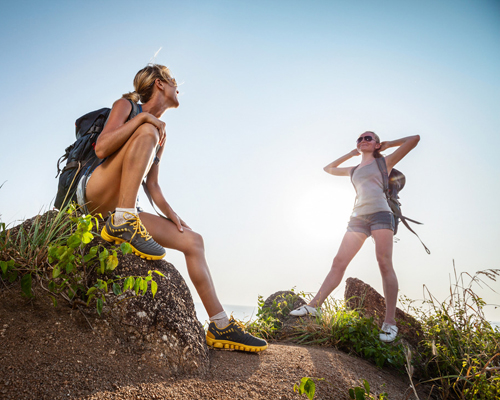What build a Good Backpack

MAIN COMPARTMENT - Most lightweight backpacks have one large top-loading compartment for storing the majority of your gear. That’s really all you need. Extra compartments and zippers add unnecessary weight. Pack items you won’t need until camp (shelter, sleeping bag/pad, stove) in the bottom of your pack and you’ll be set.
REAR MESH POCKET - Most lightweight packs have a large mesh pocket on the back. This feature comes in very handy on the trail. It’s great for gear you want to stow quickly or keep easily accessible, like a rain jacket or water purifier. It’s also good for airing out wet gear.
HIP BELT - A good hip belt is a critical feature of any backcountry pack. Your hip belt will hold most of the weight of your pack on your hips, which keeps your shoulders from tiring. Hip belts should be comfortable and transfer weight without slipping. Every pack on this list has a solid hip belt.
SHOULDER STRAPS - Shoulder straps will hold a significant amount of your pack weight as well. You’ll want them to have comfortable padding and be well spaced to avoid chafing and odd pressure points. Every pack on this list has comfortable shoulder straps.
HIP BELT POCKETS - I’m of the opinion that a backpack isn’t suitable for the trail unless it has hip belt pockets. With a lightweight pack, you won’t need to take breaks nearly as often, so you’ll want some items easily accessible (snacks, sunscreen, lip balm, sunglasses, camera, etc.). Most of the packs I recommend come with built-in hip belt pockets. If they don’t, I highly recommend buying aftermarket hip pockets.
SHOULDER POUCH - I’m also very fond of using a shoulder strap pouch on my packs. I use it to hold my camera and sunglasses while I hike. That way those items are always protected and easily accessible. A couple of the packs I recommend come with shoulder pouches, but most don’t. So you might consider an aftermarket shoulder pouch if it sounds like a good fit for you.
WATER BOTTLE HOLSTERS - Hydration is key, so your water bottles should always be easy to get to. It’s shocking to me when I test packs where I can’t reach the water bottles with the pack on. That’s just not acceptable. Every pack on this list will allow you to grab your water bottles easily while hiking.
WATERPROOFING - In general, it’s not a good idea to rely on any backpack for waterproofing. Cuben fiber is a waterproof material, but seams sewn into a pack will keep it from being 100% waterproof, even if taped. In wet weather you’ll want to pack important items (sleeping bag, clothes, electronics, etc.) in waterproof stuff sacks or plastic bags inside your pack.
HYDRATION PORTS - If you’re a backpacker that likes to use a water bladder for hydration, not having hydration ports can be a dealbreaker. I’m not a huge fan of water bladders, so it’s not as much of a concern for me. That said, most of the packs I recommend do have hydration sleeves and ports.
TOP LID - Most lightweight backpacks don’t have top lids these days in order to reduce weight. Instead, they use roll-top closures, clips, and straps to keep gear secure, which is very effective. I do recommend a couple of packs with top lids, but if you don’t have one, you probably won’t miss it.
STERNUM STRAP - Sternum straps are included on most backpacks these days. They give you the option to connect your shoulder straps across your chest for a more secure feel. It’s a nice touch when the sternum strap has an elastic section for a little give and the clip has an emergency whistle built in.
LOAD LIFTER STRAPS - Load lifter straps can be used to pull the tops of your shoulder straps back towards your backpack. This will transfer some of the weight of your pack to the front of your shoulders and release some downward pressure. Many lightweight backpacks don’t have them and they are not really necessary if you’re carrying a light load.
TREKKING POLE & ICE AXE LOOPS - Trekking pole and ice axe loops are a nice touch. They make it easy to stow your sticks when you’re not using them to hike. I find that I use mine quite often. Most of the bags I recommend come with these stowing options.